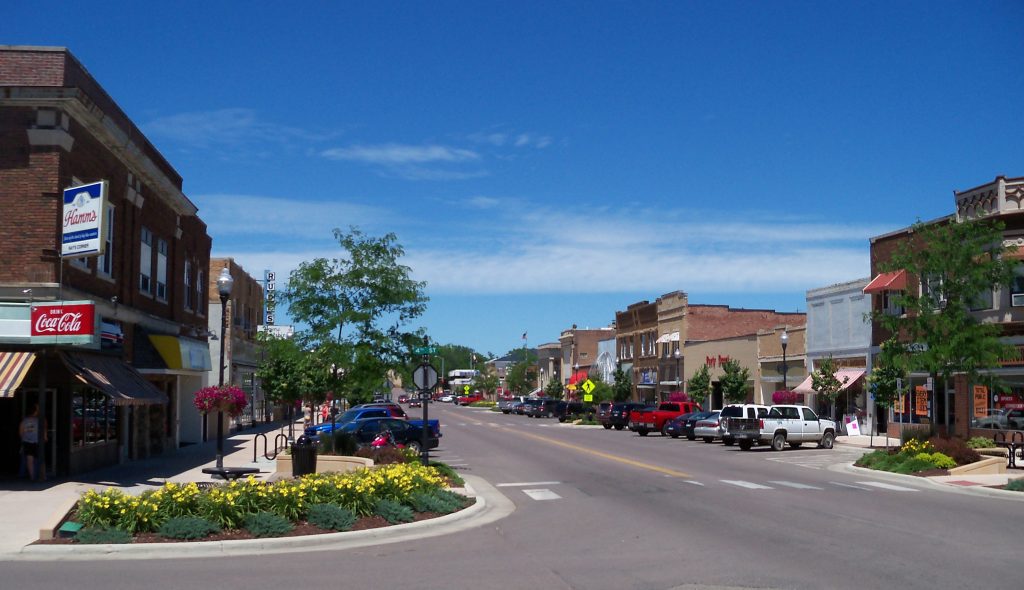Many people think that South Dakota is a peaceful location to live because of its breathtaking scenery, fascinating history, and famous Mount Rushmore. It does, however, have municipalities that are losing residents, much like many other states. This article investigates the causes of the exodus and the effects on five South Dakota villages where residents are fleeing.
Aberdeen

Overview
The third-largest city in South Dakota is Aberdeen, which is situated in the northeastern region of the state. Aberdeen’s population has been noticeably declining in recent years, despite its comparatively vast size.
Population Trends
Aberdeen’s population peaked in the mid-2010s at about 28,000 people, but it has since been steadily declining, according to the U.S. Census Bureau. According to the most recent estimates, there are about 27,000 people living there.
Causes of the Decline
- Economic Challenges: Aberdeen, which was formerly a prosperous center for manufacturing and agriculture, has had economic challenges. Economic instability and employment losses have resulted from the shutdown of multiple important manufacturing facilities.
- Aging Population: Many young people are leaving Aberdeen for better prospects elsewhere, resulting in a greater median age than the state norm.
- Educational Opportunities: Although Northern State University is located there, many graduates move to bigger cities in search of better employment opportunities.
Effects on the Community
- Housing Market: Due to an excess of available properties, Aberdeen’s housing market has seen a decline in property values.
- Local firms: A declining consumer base makes it difficult for small firms to survive, which lowers local economic activity.
Huron

Overview
Another town in South Dakota that is seeing a sharp drop in population is Huron, which is located in the east-central region. Huron, which is well-known for holding the South Dakota State Fair, has had better days.
Trends in Population
Over the last ten years, Huron’s population has been gradually declining. According to recent estimates, the population has decreased to about 12,000 from a peak of roughly 13,000 in the early 2000s.
Causes of the Decline
- Economic Decline: The region’s economy, which is largely dependent on agriculture, has been severely impacted by unfavorable weather patterns and volatile crop prices.
- Limited Employment prospects: Many locals are moving to larger cities due to the lack of employment prospects, especially for younger individuals.
- Youth Outmigration: Huron’s population is aging as a result of young people leaving the area in quest of better educational and employment possibilities.
Effects on the Community
- Education System: Funding and resources are being impacted by the local school system’s struggles with dwindling student enrollment.
- Healthcare Services: As a result of population declines, healthcare services are under pressure, which may result in reductions and less access for the surviving inhabitants.
Watertown

Summary
Northeastern South Dakota’s Watertown is well-known for its historical landmarks and scenic lake. Watertown’s population is dropping in spite of these attractions.
Trends in Population
Around 22,000 people lived in Watertown during its height in the middle of the decade. A drop to about 21,000 is suggested by recent estimates.
Causes of the Decline
- Economic Shifts: Historically dependent on agriculture and manufacturing, the town’s economy has found it difficult to adjust to contemporary economic trends.
- Lack of Diversified Employment: Younger citizens are looking for work elsewhere due to a lack of career prospects outside of established industries.
- Educational Outmigration: A lot of high school graduates go off to college and never come back, just as in other towns.
Effects on the Community
Local Economy: Businesses and services have been impacted by the decreased expenditure in the local economy as a result of the population decline.
Community Services: The quality of life has been impacted by the reduction in funding for community services, such as recreational facilities and public transit.
The Yankton

Overview
The capital of the Dakota Territory was previously Yankton, a historic town on the Missouri River. The population of Yankton is declining despite its historical significance.
Trends in Population
According to recent estimates, Yankton’s population has dropped from a peak of over 15,000 in the early 2000s to roughly 14,000.
Causes of the Decline
- Economic Transition: The town’s economy, which was formerly dependent on trade and river transportation, has had difficulty shifting to new sectors.
- Elderly Population: The decline has been exacerbated by the outflow of younger residents as well as an elderly population.
- Employment Opportunities: Due to a lack of jobs in contemporary industries, locals are now looking for work in bigger cities.
Effects on the Community
- Historical Preservation: Due to dwindling interest and a lack of finance, efforts to conserve historical sites are difficult.
- Healthcare Services: Accessibility and care quality are impacted by the overburdened healthcare system, which is similar to other municipalities.
The Brookings

Overview
South Dakota State University (SDSU) is located in Brookings, a state center for education and culture. Even though Brookings has a thriving campus community, population decrease is a problem.
Trends in Population
Since its peak of about 23,000 residents, Brookings’ population growth has stalled, with latest estimates indicating a modest fall.
Causes of the Decline
- Economic Difficulties: Although SDSU offers some economic stability, the town has trouble drawing in and keeping companies that aren’t in the education industry.
- Housing Costs: Some residents have moved elsewhere because they can no longer afford to live in Brookings due to rising housing costs.
- Graduate Outmigration: A large number of SDSU graduates depart Brookings in pursuit of better employment prospects, which adds to the city’s demographic loss.